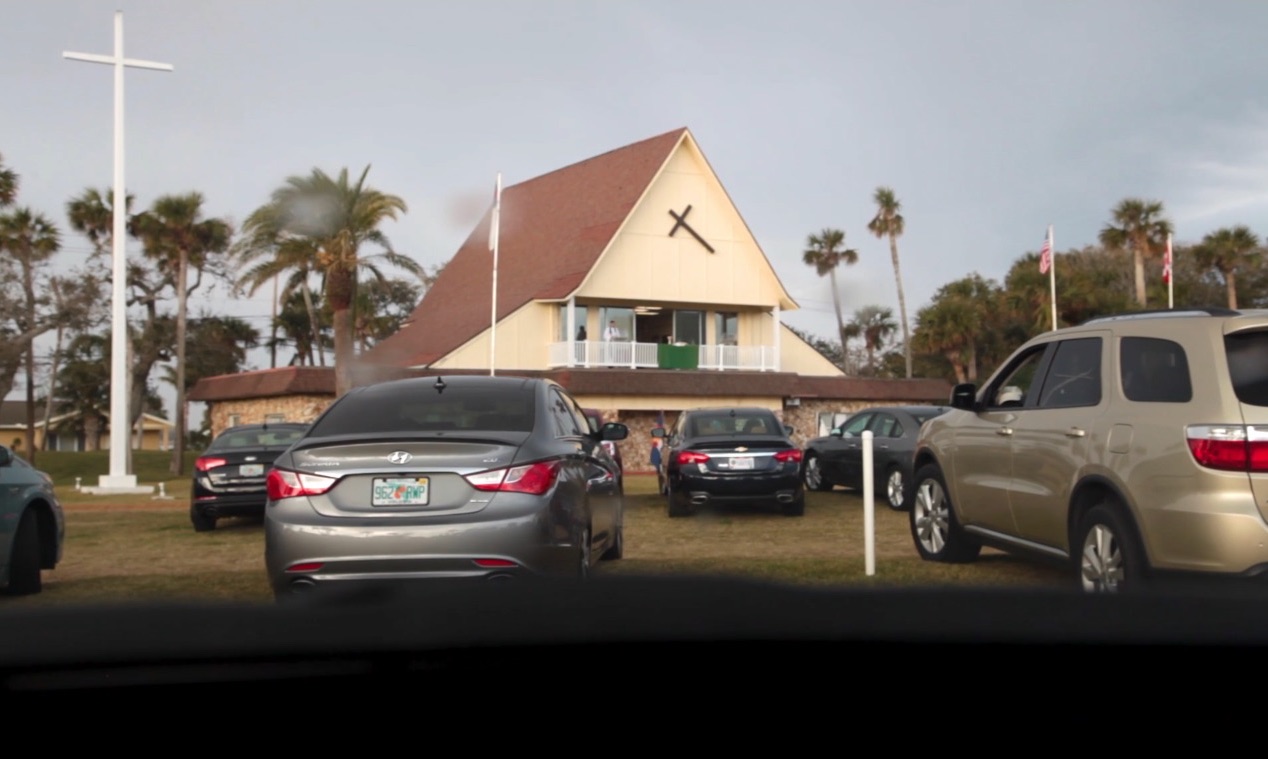ゴジラ /ɡɒdˈzɪlə/, 2020, Single-channel video, 96 min
Online screening followed by a conversation with Tokyo-based artist, curator, and scholar Greg Dvorak.
 On March 1, 1954, Daigo Fukuryū Maru (Lucky Dragon Five), a Japanese fishing boat, was contaminated by nuclear fallout as a result of the United States’ thermonuclear test, Castle Bravo, in Bikini Atoll.
On March 1, 1954, Daigo Fukuryū Maru (Lucky Dragon Five), a Japanese fishing boat, was contaminated by nuclear fallout as a result of the United States’ thermonuclear test, Castle Bravo, in Bikini Atoll.The first ゴジラ movie was released in November 1954, as a direct response to this incident, as well as, the bombings of Hiroshima and Nagasaki. The kaiju (monsters) are a metaphor for nuclear weapons, the American militarization of the Pacific, and environmental disaster. In total, 32 Japanese films were made by Toho Co., Ltd.
ゴジラ/ɡɒdˈzɪlə/ (2020) is a 96-minute single-channel video that layers all 32 films simultaneously, but with all scenes involving monsters and humans removed. This erasure mirrors the United States’ policies and actions as a settler and colonial nation, leaving a wake of destruction in both the film and reality. We are the monsters and the monsters are us.

As an artist and ocean engineer, Jane Chang Mi assesses the post-colonial ocean environment through interdisciplinary research. She examines the narratives associated with the underwater landscape considering the past, present, and future. Mi most often focuses on the occupation and militarization of the Pacific Ocean by the United States. This interest emerges from her background as an ocean engineer, a field that is inextricably linked to the American military complex.
In 2016, Mi was the inaugural artist in residence at the World War II Valor in the Pacific National Monument, researching the pre-contact history of Pearl Harbor. The project concluded as a part of the first Honolulu Biennial in 2017. Her work has been exhibited both nationally and internationally, most recently at Te Uru Waitakere and ST Paul Street Gallery in Aotearoa (New Zealand) in 2019. She has been a scientist at the Arctic Circle Program (2010), a recipient of the University of California Institute for Research in the Arts grant (2014), and a fellow at the East West Center at the University of Hawaii, Manoa (2012).
Mi is based in Honolulu and Los Angeles, where she is Assistant Professor of Media Studies at Scripps College.
Greg Dvorak is Professor at Waseda University (Graduate School of Culture and Communication Studies / School of International Liberal Studies). Having grown up in the Marshall Islands, the United States, and Japan, Dvorak is an artist/curator/scholar who specializes mainly in themes of postcolonial memory, gender, militarism, resistance and art in the Oceania region. Founder of the grassroots art/academic network Project Sango, he serves as guest curator for Northern Oceania in the 10th Asia Pacific Triennial of Art (APT) and served as curatorial advisor to artistic director Fumio Nanjo in the inaugural Honolulu Biennial in 2017, having recently also advised other exhibitions such as the Yokohama Triennale 2020. Among many publications relating to decolonizing Oceania between Japan and the United States, he is the author of 'Coral and Concrete: Remembering Kwajalein Atoll between Japan, America, and the Marshall Islands' (University of Hawaiʻi Press, 2018).












